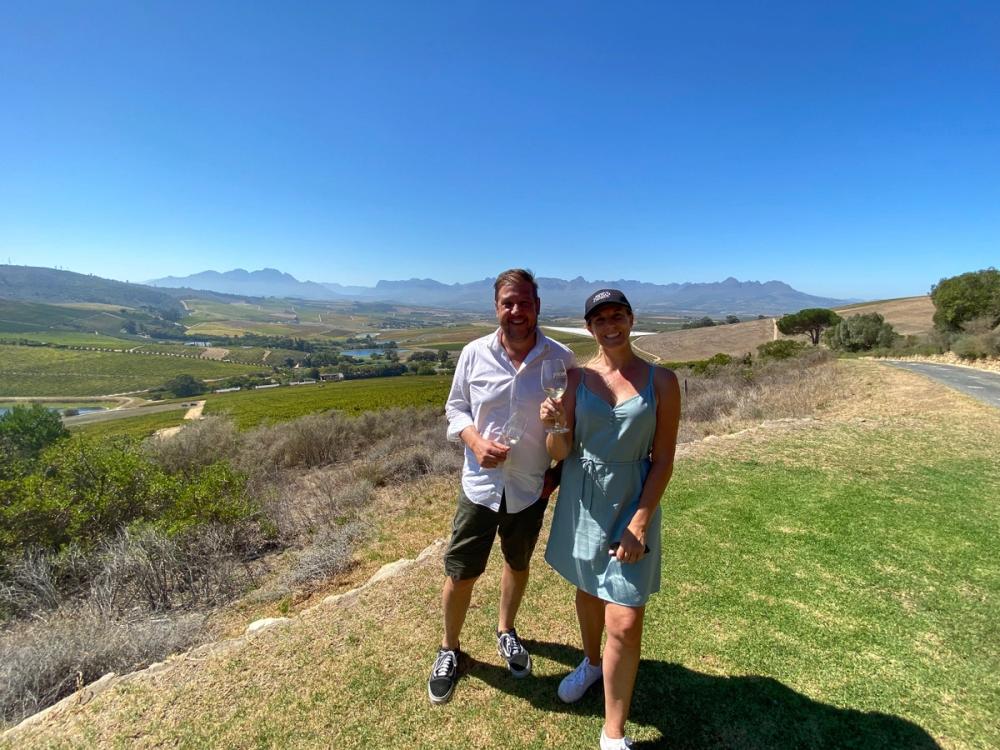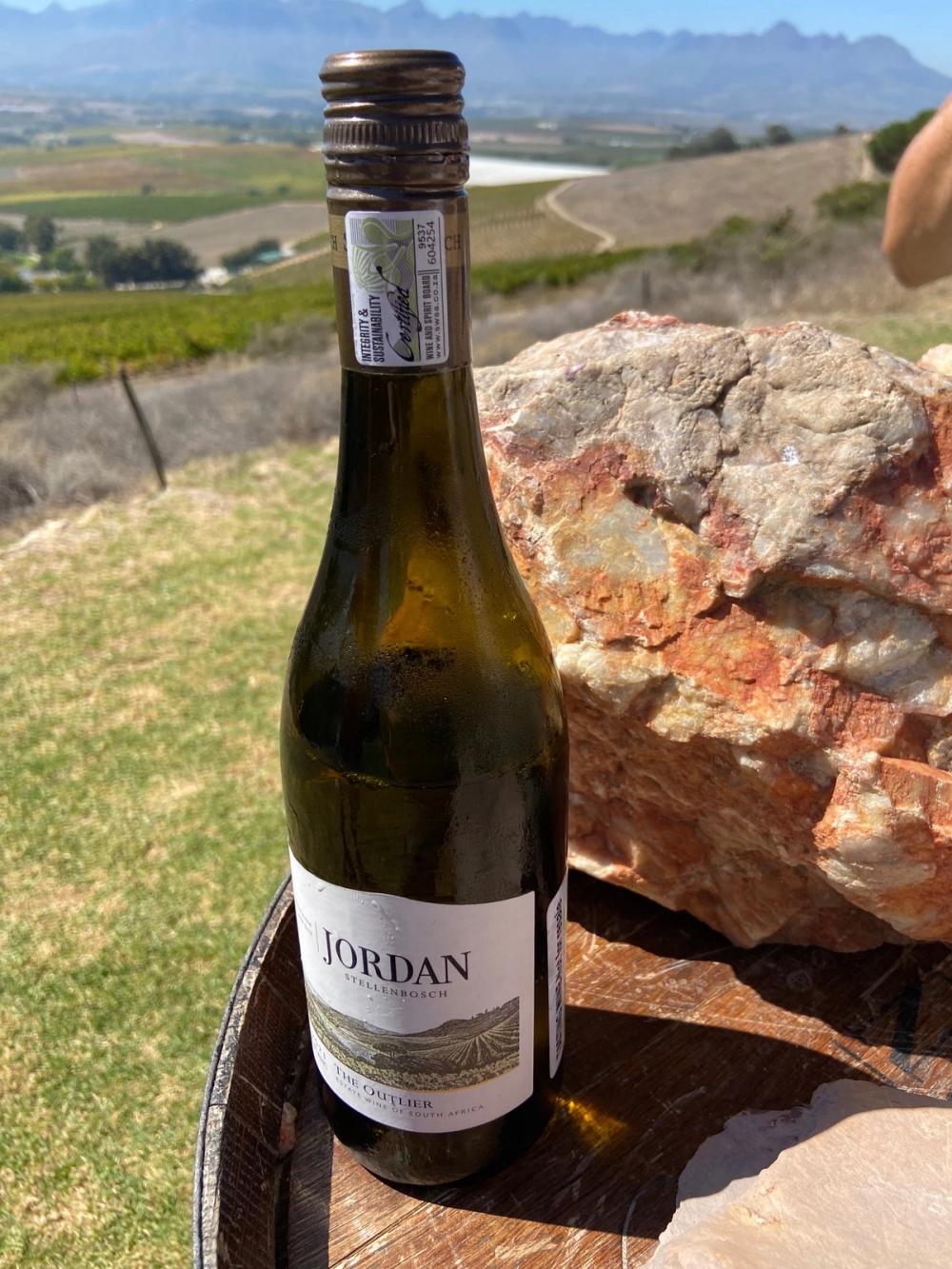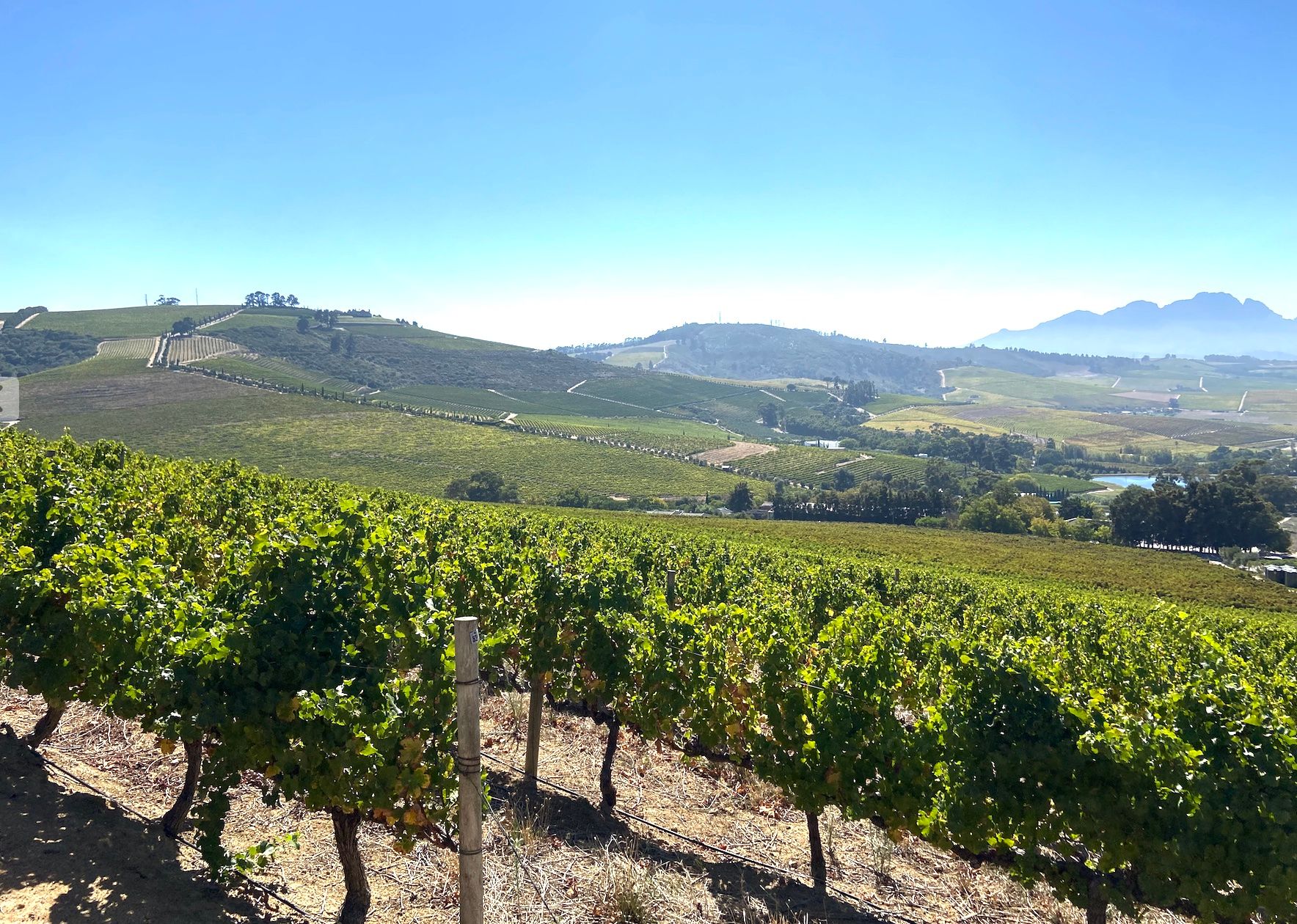This is the second of the articles features in the new Stellenbosch Business Report produced by The Buyer for Stellenbosch Wine Routes that analyses and examines the key trends and insights from the region.
Click here to download the PDF report.
There really is nowhere else in the world quite so dramatic and awe inspiring as standing on a mountainside in Stellenbosch and looking out across the vast valleys and mountain ranges that stretch out in front of you for mile after mile. Stand in the right place and you can also see, and feel, the influence of the Atlantic and Indian Oceans that stretch out some miles away.
A key factor in how quickly the quality and reputation of South African and Stellenbosch wines have grown in the last 10 years is the work that has been done to better understand just what influence and impact that landscape, those mountain ranges, and its soils, and micro climates have on the type of grapes grown, where and how.

The sea, wind and climate all have an impact on Stellenbosch’s unique terroir
All of which has been captured in a new tool ‘Stellenbosch Terroir’ produced by Stellenbosch Wine Routes and compiled and edited by South African wine academic, Jonathan Steyn, to provide a guide to navigate the complexities of the Stellenbosch winemaking scene.
“We want to try and help create a more focused approach about what varieties are best planted where based on a better understanding of the soils, the terror and the micro climates of what are effectively a multitude of different site expressions,” Understanding the unique qualities of Stellenbosch terroir he explains. “We have hopefully been able to break down that diversity in a way that simplifies, unpacks and explains just how unique this region is.”
To do that has involved doing strenuous blind tastings of varieties and then analysing the impact that different soil styles, expressions, and geology have on them. “We want to raise the awareness of how and what people think about Stellenbosch wines,” says Steyn.
That work is, in turn, helping each of the representatives bodies, like Chenin Blanc Association, the Stellenbosch Cabernet Collective and the Pinotage Association, to help raise the profile and status of its members’ wines.
He likens it to the rings in a tree that when taken together can raise the image and reputation for all of Stellenbosch and brand South Africa.

Jonathan Steyn and Jordan Wines’ Thea van der Merwe take in the awesome views
By truly understating the influence of its terroir it can help Stellenbosch and the wider South African wine industry present a united front about what it is about, what it stands for and what makes it unique rather than, during its transformative years coming out of isolation, looking to compare itself to the great wine regions in the world like Bordeaux, says Steyn.
From a commercial point of view it also helps position Stellenbosch as a premium wine producing region with a defined wine and terroir communications tool.
“What is the Stellenbosch factor? What makes our wines taste the way they do? What are the differences between the different sub regions? Understanding our terroir can help answer all those questions,” he adds.
“In the past it was the winemaking that was seen as the key factor. Now it is viticulture and winemaking together that is making the difference.”
Case study: Jordan Wine Estate
The Jordan Wine Estate is a living, breathing example of the unique soils, terroirs and micro climates that dictate so much of the winemaking that is possible across Stellenbosch.
With its banks of thousands of years old granite, shale and sandstone soils it is the perfect home for trained geologist Gary Jordan and his wife Kathy, who took over the property from his parents in 1993. Together they have analysed the land to select varieties and clones that are specifically suited to its various soils and slopes. A landscape and micro climate that allows them to work with a whole array of cultivars.

Jordan Wines sits in a unique location where it is influenced by two valleys and oceans
It’s easy to see why Jonathan Steyn, is so excited about what the Jordan Wine Estate can do to help other producers better understand the sites that they have by analysing their geology and terroir.
It’s one of the few parts of the region, he says, that is directly influenced by the clashing maritime, Atlantic and mountain climates and the cooling breezes from Table Bay and False Bay. It is uniquely located in that it straddles two valleys and has vines planted based on the soils and how and when they face the sun.
Its east-facing vines attract the cooler morning sun and are ideal for Chardonnay, thanks also to the seams of white quartz stones and black tourmaline-rich granite interspersed between the vines. Then its west-facing vines get a warmer sun effect in the afternoon and work well for its richer, riper red varieties like Syrah and Cabernet Sauvignon. Braced with fresh acidity from the strong Atlantic breezes and the textured effect of the mineral-rich soils and tin-bearing gravel.
The farm then stretches up and over the hillside (highest point 410m) with vines facing southwards towards Cape Town, with views of Table Top Mountain and the influence of the False Bay Ocean – ideal for cool climate Sauvignon Blanc, based on deep gravel soils.
Its then able to grow more hardy, resistant grapes on its north-facing, shallower gravelly slopes that receive no direct sunlight. Ideal for Cabernet Sauvignon, Merlot and a recently planted plot of what is the first registered Assyrtiko in the region – that has had to wait seven years in isolation to be released.
It is this dedication and attention to detail that singles out the Jordan Wine Estate as such a respected premium wine producer.
It’s also where you can truly taste the “geology in the wine,” says Steyn. “The complexity of Stellenbosch is laid out right in front of you.”































